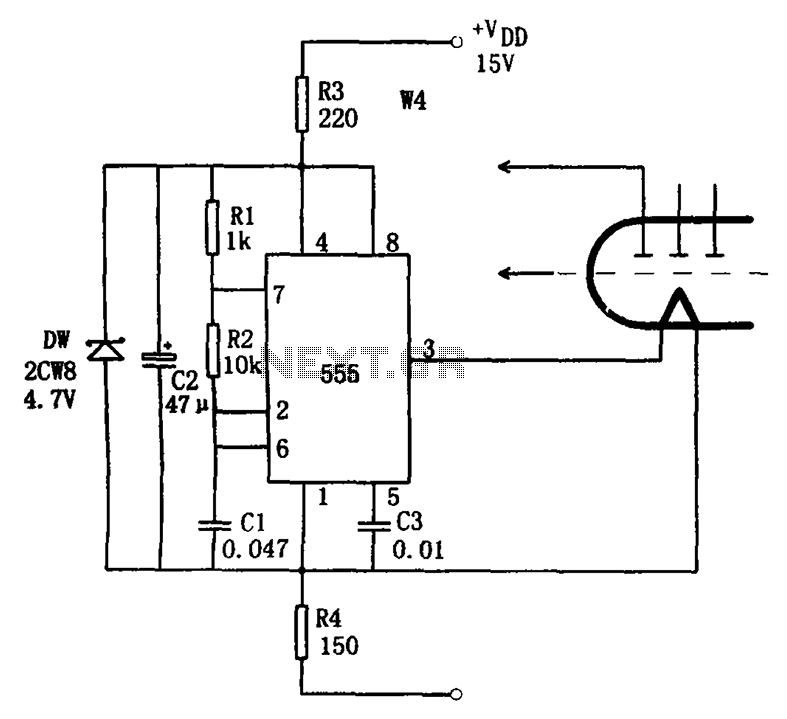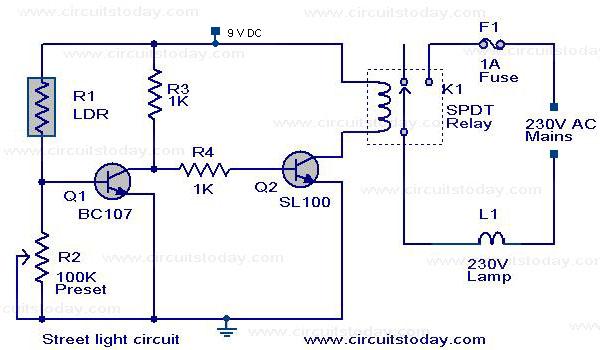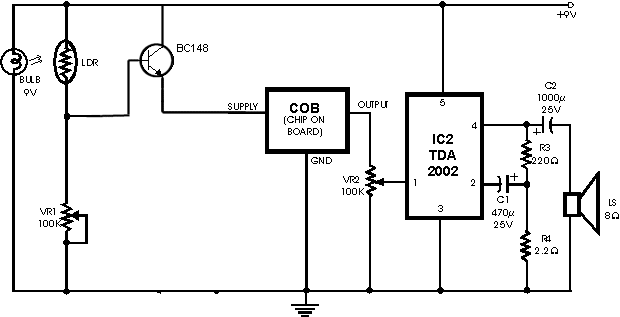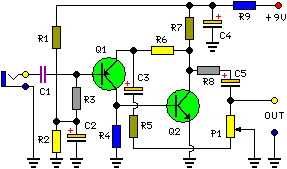
Cheap fluorescent display circuit 555

The economic fluorescent display circuit is illustrated in the figure. The primary component of this circuit is the 555 timer configured as a multivibrator. The oscillation frequency is determined by the components R1, R2, and C1, with a frequency calculated as f = 4/(R1 + 2R2) C1, which corresponds to approximately 4 kHz. The filament receives a DC bias of VDD, calculated as R4/(R3 + R4), with a value of 6V. This circuit can be coupled with a DC voltage of Vp-p and an AC voltage of approximately 4V to 6V to power the fluorescent charactron filament, enabling the display of fluorescent characters. The circuit is characterized by its simple configuration and ease of manufacturing.
The economic fluorescent display circuit utilizes a 555 timer integrated circuit (IC) configured in astable mode, which generates a square wave output. The frequency of oscillation is primarily influenced by the resistors R1 and R2, and the capacitor C1. The relationship of the frequency can be expressed mathematically as f = 4/(R1 + 2R2) C1, which allows for fine-tuning of the output frequency to approximately 4 kHz. This frequency is suitable for driving the fluorescent display effectively.
The circuit includes a filament biasing arrangement, where the voltage across the filament is determined by the resistor divider formed by R3 and R4. The voltage VDD is calculated as VDD = R4/(R3 + R4) * V_supply, ensuring that the filament operates at the required 6V for optimal performance.
To drive the fluorescent charactron, the circuit can accept a peak-to-peak DC voltage (Vp-p) and an AC voltage in the range of 4V to 6V. This capability allows for the efficient operation of the fluorescent display, which is essential for visual output in various applications. The simplicity of the circuit design, coupled with the availability of common electronic components, makes it an attractive choice for manufacturers and hobbyists alike. The ease of assembly and low cost further enhance its practicality in electronic display systems. As shown in FIG economic fluorescent display circuit. The core of the circuit is the multivibrator 555 and R1, R2, C1 and other components of the oscillation frequency is f 1.4 4/(R1 + 2R2) C1, the icon parameter corresponding frequency of approximately 4kHz. FIG filament DC bias of VDD R4/(R3 + R4) F 6V. This circuit can be coupled with a DC voltage Vp-p and a voltage of about 4V 6V AC voltage to the fluorescent nkHz charactron filament calculator, so that the fluorescent charactron work displayed. The circuit configuration is simple and easy to manufacture.
The economic fluorescent display circuit utilizes a 555 timer integrated circuit (IC) configured in astable mode, which generates a square wave output. The frequency of oscillation is primarily influenced by the resistors R1 and R2, and the capacitor C1. The relationship of the frequency can be expressed mathematically as f = 4/(R1 + 2R2) C1, which allows for fine-tuning of the output frequency to approximately 4 kHz. This frequency is suitable for driving the fluorescent display effectively.
The circuit includes a filament biasing arrangement, where the voltage across the filament is determined by the resistor divider formed by R3 and R4. The voltage VDD is calculated as VDD = R4/(R3 + R4) * V_supply, ensuring that the filament operates at the required 6V for optimal performance.
To drive the fluorescent charactron, the circuit can accept a peak-to-peak DC voltage (Vp-p) and an AC voltage in the range of 4V to 6V. This capability allows for the efficient operation of the fluorescent display, which is essential for visual output in various applications. The simplicity of the circuit design, coupled with the availability of common electronic components, makes it an attractive choice for manufacturers and hobbyists alike. The ease of assembly and low cost further enhance its practicality in electronic display systems. As shown in FIG economic fluorescent display circuit. The core of the circuit is the multivibrator 555 and R1, R2, C1 and other components of the oscillation frequency is f 1.4 4/(R1 + 2R2) C1, the icon parameter corresponding frequency of approximately 4kHz. FIG filament DC bias of VDD R4/(R3 + R4) F 6V. This circuit can be coupled with a DC voltage Vp-p and a voltage of about 4V 6V AC voltage to the fluorescent nkHz charactron filament calculator, so that the fluorescent charactron work displayed. The circuit configuration is simple and easy to manufacture.





